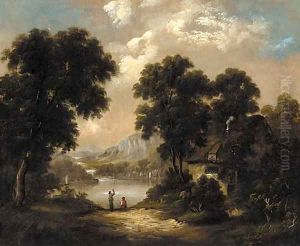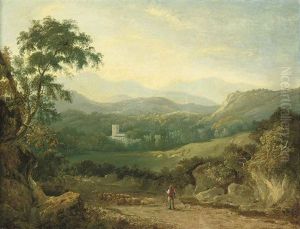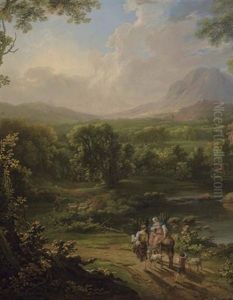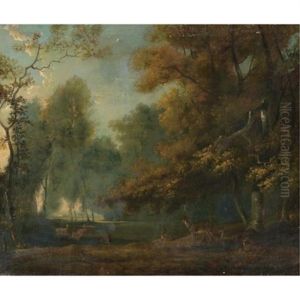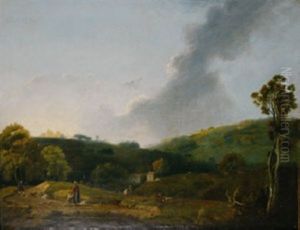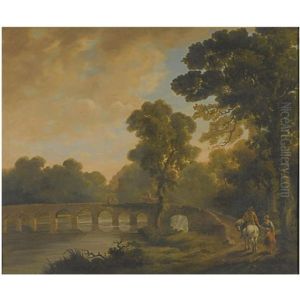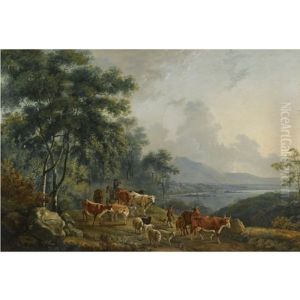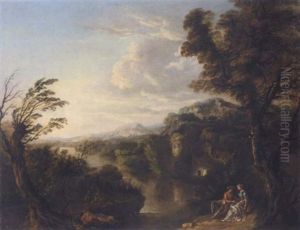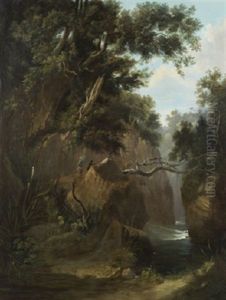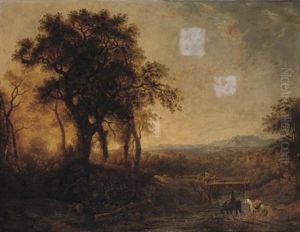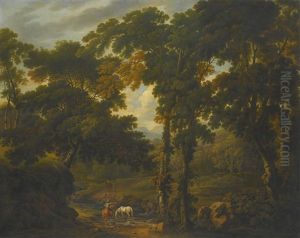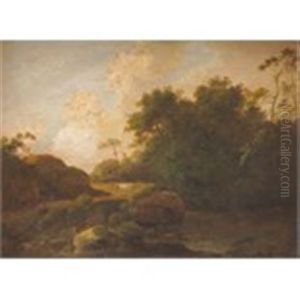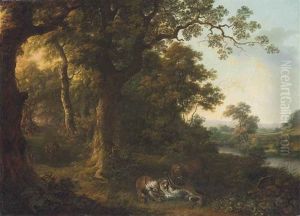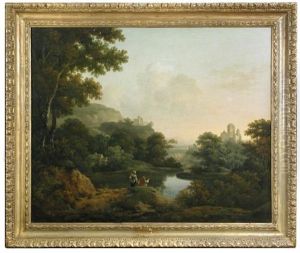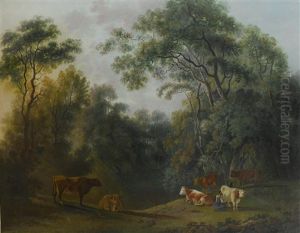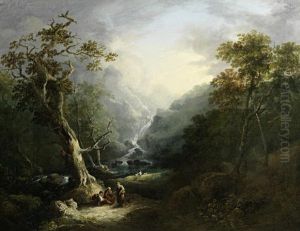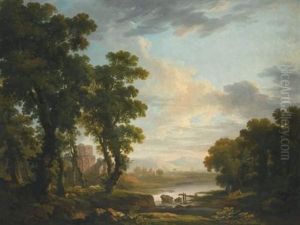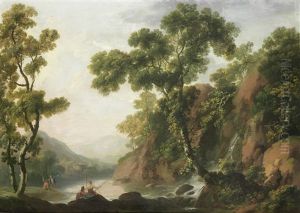George Barret Paintings
George Barret Sr. was a pre-eminent Irish landscape painter, born in Dublin, Ireland, around 1728/32. His exact birth date varies in historical records, but his contribution to the development of British landscape painting in the 18th century remains undisputed. Barret initially gained recognition for his work within Ireland, where he was a founding member of the Dublin Society of Artists. He excelled in capturing the lush, romantic landscapes of his homeland, which quickly earned him a reputation that extended beyond Ireland's borders.
In the mid-1760s, seeking broader opportunities and patronage, Barret moved to London. This relocation marked a significant turning point in his career. In London, he became associated with the burgeoning movement that sought to establish landscape painting as a significant genre within the British art scene. Barret's landscapes, characterized by their dramatic portrayal of light and shadow, as well as their meticulous attention to detail, resonated with the Romantic sensibilities of the time. His works often depicted the sublime beauty of nature, aligning with the aesthetic preferences of the period.
Barret's talent and contributions to the art world were acknowledged in 1768 when he was elected as a founding member of the Royal Academy of Arts, an institution that played a crucial role in promoting the arts in Britain. His involvement with the Royal Academy further solidified his status as a leading landscape painter of his era.
Despite his success, Barret faced financial difficulties later in life, largely due to poor management of his finances and the costs associated with his artistic endeavors. He died in poverty in Paddington, London, in 1784. However, his legacy lived on through his influence on the genre of landscape painting and his role in the early years of the Royal Academy. His works continue to be celebrated for their contribution to the development of British landscape art, and they can be found in various prestigious collections, including the National Gallery of Ireland and the Victoria and Albert Museum in London.

